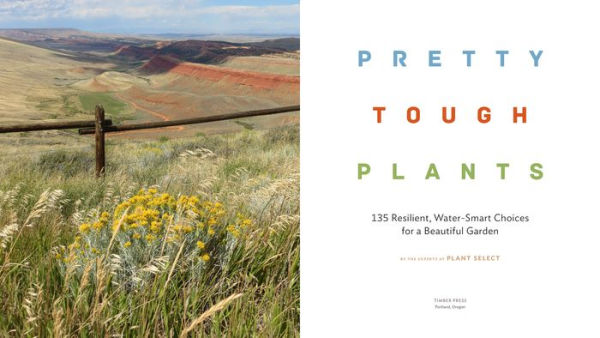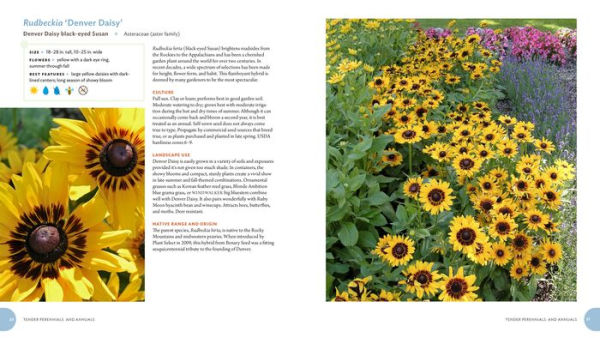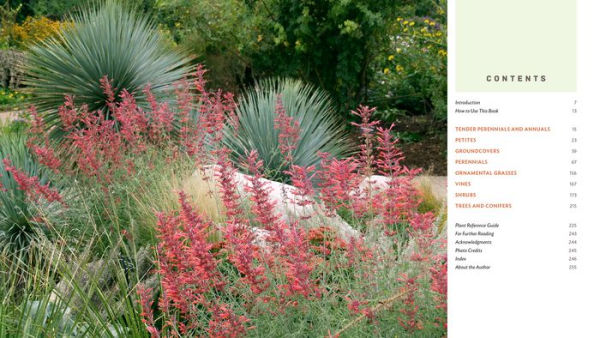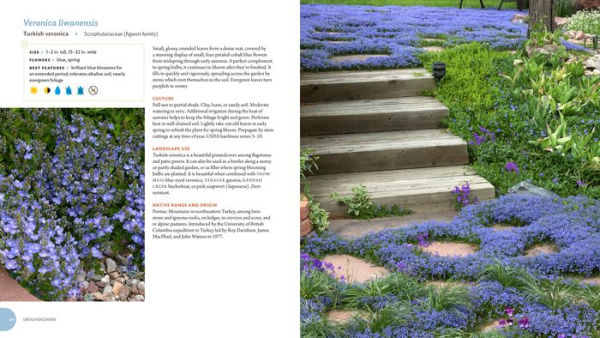Read an Excerpt
Fifty years ago, gardens across much of America looked conspicuously the same: bluegrass lawns, a foundation planting of junipers (or yews perhaps) with a fringe of annuals planted between the green monocultures. But with the birth of xeriscaping and a pride in distinctive regional landscapes, the face of the American garden began rapidly changing, and the “perennial boom” of the early 1980s has morphed into a “perennial celebration” for many gardeners, further transforming landscapes and gardens across the country. In the Rocky Mountain west, Plant Select spearheaded the movement in the 1990s by providing a rich palette of native and adapted trees, shrubs, perennials, and even a few annuals which thrive in the changeable climate locals enjoy and sometimes complain about. WHAT IS PLANT SELECT? Plant Select is the country’s leading brand of plants designed to thrive in high plains and intermountain regions, offering plants that provide more beauty with less work so gardeners of all levels can achieve smart, stunning, and successful gardens using fewer resources and with a more positive environmental impact. Driven by the belief that the right plants in the right place matter and that cultivating plants in tougher growing environments requires smarter approaches, Plant Select leverages a uniquely collaborative model and highly selective cultivation process to find, test, and distribute plants that thrive on less water. Plant Select’s goal is to create smart plant choices for a new American landscape inspired by the Rocky Mountain region. UNDERSTANDING THE NATURAL LANDSCAPE AND PLANT ORIGINS The region Plant Select focuses on is truly a steppe (pronounced step)—a semiarid region dominated by flowering plants, grasses, and grasslike species and characterized by extremes of cold and heat. Around the globe, steppes occupy large geographic areas on four continents. It’s been said the steppe has only two seasons: summer and winter—except that these tend to leapfrog through the garden year, never taking a fully linear path. Summer temperatures stretch from March to October punctuated by untimely frosts, hail, and snowstorms. Winters can have long summery stretches of shirtsleeve weather coaxing plants into precocious growth just in time for arctic blasts. Is it any wonder that many traditional garden plants (selected and developed for maritime climates like the Netherlands, England, or the Eastern seaboard or Oregon in the United States) fail to thrive here? Plant Select looks beyond the more traditional American landscape plant offerings and instead seeks out plants from the semiarid, harsh climates in the western United States (such as penstemons and agastaches) and the Southern Hemisphere (delospermas and osteospermums) that grow naturally in more extreme climates and that are adapted to soils of higher pH and long periods of water scarcity. A large proportion of Plant Select adoptions come from Eurasia: the high mountains surrounding the Mediterranean (home to Digitalis species) and especially from the steppes of Asia proper—the closest correlative to the Rocky Mountain region in climate. Three features of the steppe environment have an enormous impact on plant options. First and foremost is the soil. Plants growing in steppe climates have a high tolerance for the pedocal soils characteristic of semiarid regions. These soils are rich in mineral content (clay or sand with low humus content) and high in nutrients. Properly managed, pedocals develop a porous, more highly aerated structure in winter due to the freeze-thaw action of frost. If watered sparingly, these soils retain a high level of fertility that is often leached in wetter climates. The opposite soil type, pedalfer, is characteristic of regions of high rainfall; it’s often intensely acidic in pH and much lower in a wide spectrum of nutrients. Plant Select plants are selected for their preference to pedocals over pedalfers. These are plants that grow well here—not in the soils across the continent. The second characteristic of the steppe environment is intense sunlight. Plant Select choices, often evergreen or ever-silver, better tolerate high levels of light than the many plants native to the interior United States. This year-round presence allows for continuous photosynthesis by the plants during the winter months when there is strong solar radiation. In the west, this same sunshine can burn many plants from maritime climates which may need deep shade to grow here. Many native western wildflowers, as well as many Plant Select varieties, have small, hairy leaves or leaves covered with a layer of wax to protect them from strong sunlight. Because so many of these plants are evergreen, however, a garden using them can have a powerful beauty in all seasons. The last issue is water. Many Plant Select plants come from regions with less than 10 inches of annual precipitation (for example, fernbush, Apache plume, and Mojave sage). These plants often grow best in gardens with little or no supplemental irrigation, but any plant on the Plant Select roster is apt to thrive with far less water than is usually used in regional gardens. Gardeners who make an effort to conserve water are thrilled with Plant Select for providing an ever-expanding portfolio of tough, water-thrifty plants to turn to.














